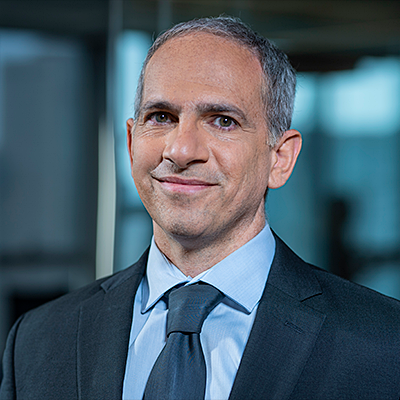Q1. Sygnia has positioned itself as a company that helps organizations enable a proactive cyber defense capability. What exactly is proactive defense and what are some of the key requirements for enabling such a capability?
Sygnia is a cyber technology and service company, that provides consulting and incident response support for organizations worldwide. We work with companies both to proactively build their cyber resilience, and to defeat attacks within their networks. In doing so, we leverage learning from our reactive engagements, as we’re constantly responding to cyber incidents, and we bring these insights into the proactive work of building resilience. We make sure to drive security against the realistic risks, not only controls, and to focus on the highest impact threats to business and the most impactful opportunities to enhance security.
Sygnia is the trusted advisor of technology and security teams, as well as senior leaderships, of leading companies around the world, including Fortune 100 companies. We draw on security talent from across the industry, as well as the ranks of elite intelligence and technology units, and we provide our clients with end-to-end strategic support. This means applying a hands-on gloves-off approach, working in close collaboration with IT, security teams, as well as executive management.
When we think about proactive defense, we aim to create an "efficient frontier": How do you build the optimal portfolio of security efforts against the threats. We go beyond the traditional method of gap analysis against generic best practices, by leveraging the attacker perspective. One of the ways that we found to be highly effective is the use of a scenario-driven approach to better identify the threats organizations face, ascertain the ability to defend against them, and determine their impact. We merge the strategic perspective of business risk with the technical perspective of ethical hacking, to assist in developing high-impact attack scenarios focused on protecting critical assets and enabling business processes. We call this methodology MASS, (Massive Attack Scenarios Simulation).
The proactive resilience enhancement journey often culminates in the delineation of a security roadmap that is prioritized across impact and feasibility, typically focused on optimizing existing capabilities.
Q2. What are the biggest challenges that organizations face when it comes to reducing attacker 'dwell time'? What should they be doing to reduce it as much as possible?
Dwell time is the length of time that cyber attackers has free reign in an environment from the time they get in until they are detected and extricated. Dwell time is often measured through metrics such as Mean Time to Detect (MTTD) and Mean Time to Remediate (MTTR). Naturally, the longer the dwell time — the greater the opportunity for attackers to steal sensitive information, disrupt operations, corrupt data, and cause strategic damage.
The data we have indicates that generally dwell time has been declining over the years. However, the situation is still far from acceptable. There is also a learning competition in this area as well — attackers are operating with greater velocity and stealth, and in the longer term we’re seeing a trend of attacker automation. Our experts already identify slow changes in malware design and TTPs, which suggest that we may end up with fully automated APTs, which will be far faster than what we see today.
Improving detection time can be a daunting challenge. Some of the difficulty is the result of the fact that our networks are increasingly complex, and that as visibility improves, "signal" to "noise" ratio becomes almost unmanageable.
The good news is that we can take an existing monitoring capability of a company, or a SOC, and improve its visibility and response readiness dramatically, in most cases even based on its existing technologies. We help companies assess their detection capabilities against realistic threats, and optimize visibility, logging, and analytics, dramatically enhancing their detection capabilities. It must be contextualized to the network, critical assets and threats. When we combine this work with enhancing processes, contingencies and playbooks, to improve readiness, we also see a dramatic reduction in response time, and diminished effects of a breach.
If an organization has the maturity and resources, a strong recommendation is also to proactively hunt threats within the network to identify and defeat attacks at an early stage. While there is no absolute assurance, the technologies, threat intelligence, advanced analytics and forensic expertise that we leverage as part of these efforts can provide a relatively high level of fidelity. You can gain confidence in the integrity of your networks and better protect your critical assets. BTW, as many detection capabilities are based on discerning anomalies, it makes sense to establish a clear baseline — so as to make sure you don’t already have an active or dormant malicious presence within your network, before you optimize your detection capabilities.
Q3. What are Sygnia's plans at the Black Hat Europe 2020 virtual event? What do you expect to highlight at the events?
At Black Hat Europe 2020, we plan on showcasing a heavyweight disruptive extortion attack, from both the attacker and defender perspectives, and presenting key lessons learned and insights from the frontlines of incident response during the COVID-19 era. Black Hat is also an opportunity for us to touch base with our friends in the industry and make sure we are on top of the latest in terms of security technologies.
COVID-19 has intensified the challenges of cyber. We have all taken war time risks in adapting to the new normal, and in many cases, security was affected. What we intend to do in our talk in Black Hat is to focus not on the risk, but rather on the opportunity - the silver lining. How can organizations leverage their control of their terrain, and the ability to emulate and simulate the attackers, to flip the asymmetry and improve resilience?
There is a unique opportunity to leverage these circumstances to make organizations even more secure — even as they become even more dependent on technology and expand their potential attack surface.








